These lacto fermented brussels sprouts is a tangy, salty, tasty snack that is probiotic! Fermented brussels sprouts remains crunchy during the fermentation process- perfect if you are looking for a crunchy, salty snack!
I started fermenting my produce over the years so I could introduce more probiotics into my diet. A happy gut is the key to healthy and happy body.
Resources like ‘Wildcrafting Fermentation’ and ‘The Noma Guide to Fermentation‘ have been very helpful in my fermentation journey. Those books helped give me the building blocks for developing this recipe. If you are fascinated by fermentation like me- I highly recommend those books!
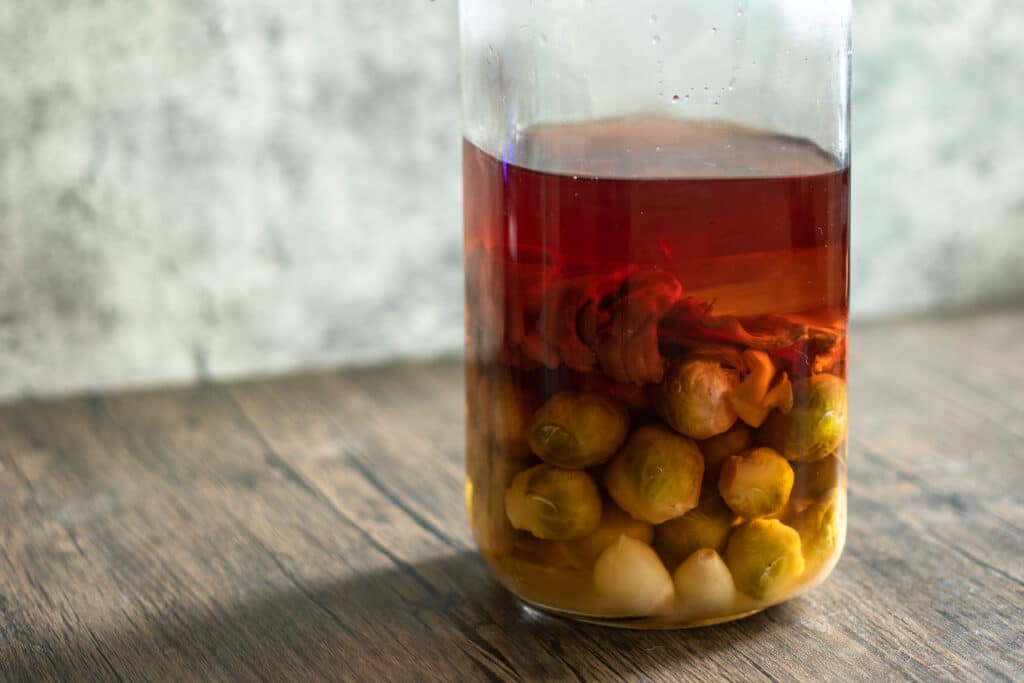
How to Ferment Brussels Sprouts
To begin, gather all your equipment and ingredients. You’ll need a fermentation jar or crock, fermentation weights, 12 oz of brussels sprouts, 4 cups of water, 1 ½ tbs of sea salt, 1 bay leaf, 3 cloves of garlic, and a large cabbage leaf.
- First, clean the brussels sprouts and remove any dirty leaves.
- Next, in a large clean jar, add the water, salt, bay leaf, and 3 cloves of peeled garlic.
- Then, add the brussels sprouts and cover them with the cabbage leaf, which will help prevent anything from floating to the surface.
- Finally, top with fermentation weights so that everything is fully submerged.
Leave the jar in a cool, dark place for 3-12 weeks. After three weeks, the brussels sprouts will be crunchy and slightly sour and salty. At twelve weeks, the brussels sprouts will be slightly softer (but still with a slight crunch) and will be sourer and saltier.
But why stop at just 12 weeks when you can ferment for even longer?
Fermenting for a period of 24 weeks, for example, will make brussels sprouts even more sour, salty and flavorful. This recipe is very flexible, and you can experiment with the fermentation time to suit your taste.
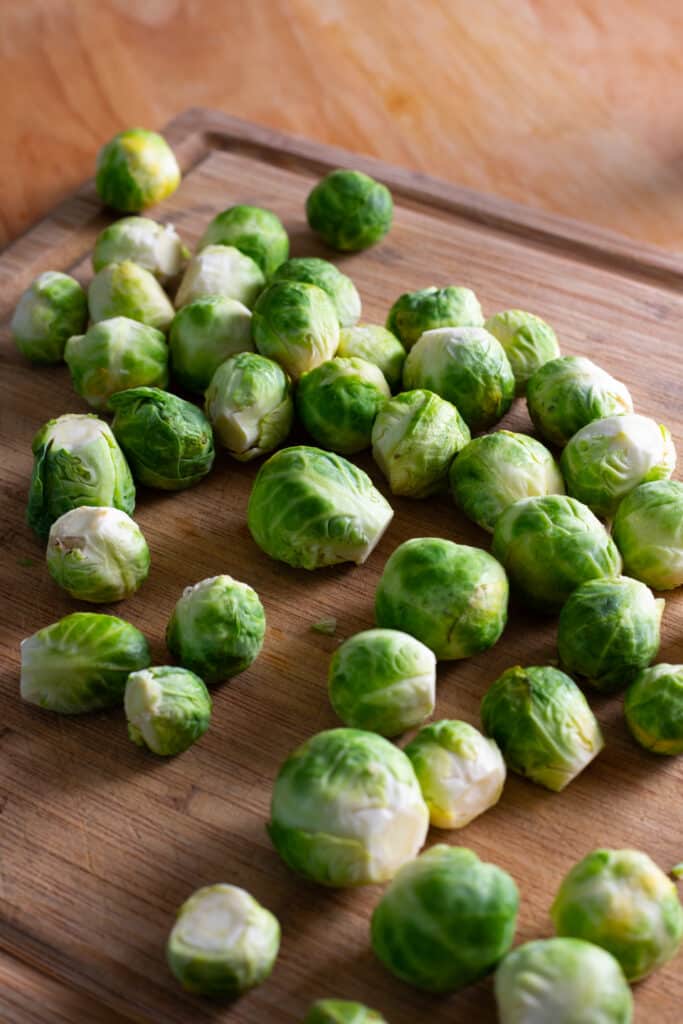
Preventing Contamination
Fermenting foods at home can be a fun and delicious way to preserve them, but it’s important to keep in mind that fermentation can also create the perfect environment for harmful bacteria to grow if not done properly. In order to prevent contamination and ensure that your fermented foods are safe to eat, here are a few tips to keep in mind:
- Cleanliness is key! Make sure that all of your equipment, utensils, and surfaces are clean before beginning your fermentation process.
- Use the right amount of salt. Salt helps to prevent the growth of harmful bacteria and to preserve the fermented food. Follow the recipe guidelines for the right amount of salt
- Keep everything submerged. As the fermentation process is anaerobic, and means oxygen should be exclude, so use fermentation weights and a cabbage leaf, to keep everything submerged.
- Keep the temperature consistent. Fermentation should take place at around room temperature. Avoid storing your jar in a location that gets too hot or too cold.
- Check for mold. Keep an eye on your fermentation jar for signs of mold or other discoloration. If you notice anything suspicious, discard the contents immediately.
By following these tips, you can ensure that your fermented foods are safe to eat, and enjoy all the delicious and healthy benefits of fermentation.
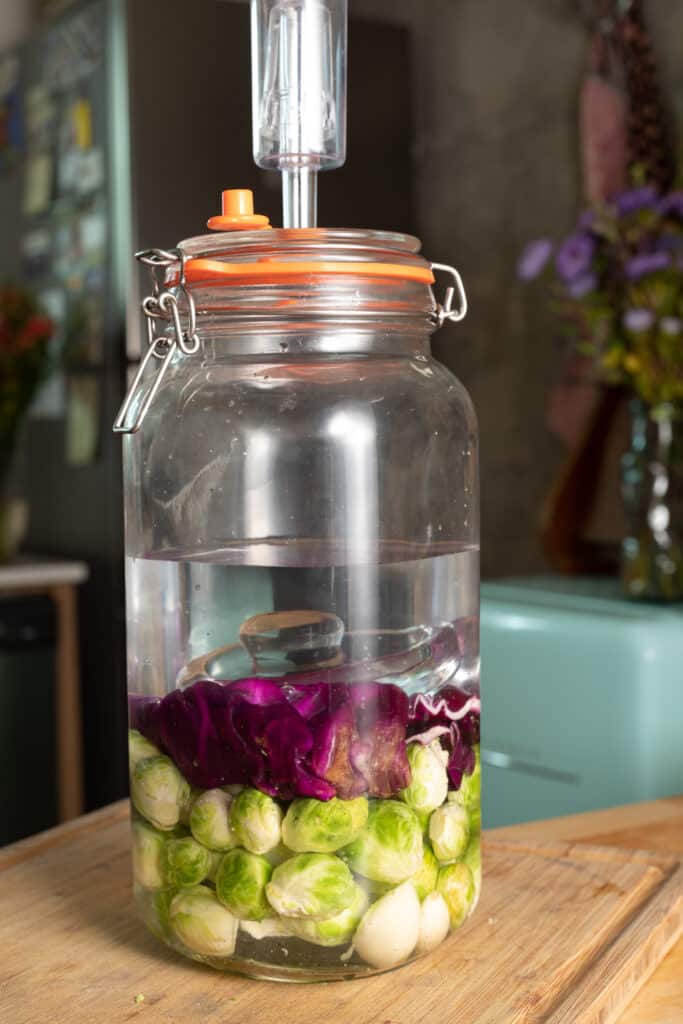
How to Serve Fermented Brussels Sprouts
The flavor of fermented brussels sprouts is very similar to a pickle. It has more of a crunch to it but has the same salty and sour flavor. It is great served with olives, pickles, and fruits for cocktail hour or as part of your charcutier board.
Another way to serve these brussels sprouts is to bread them and fry them! Think of breaded and fried pickles- it would be like a crunchier version of that.
Personally, I enjoy snacking on the fermented brussels sprouts as a snack on their own. It’s a fun and easy way to incorporate probiotics into your diet- and it tastes great!
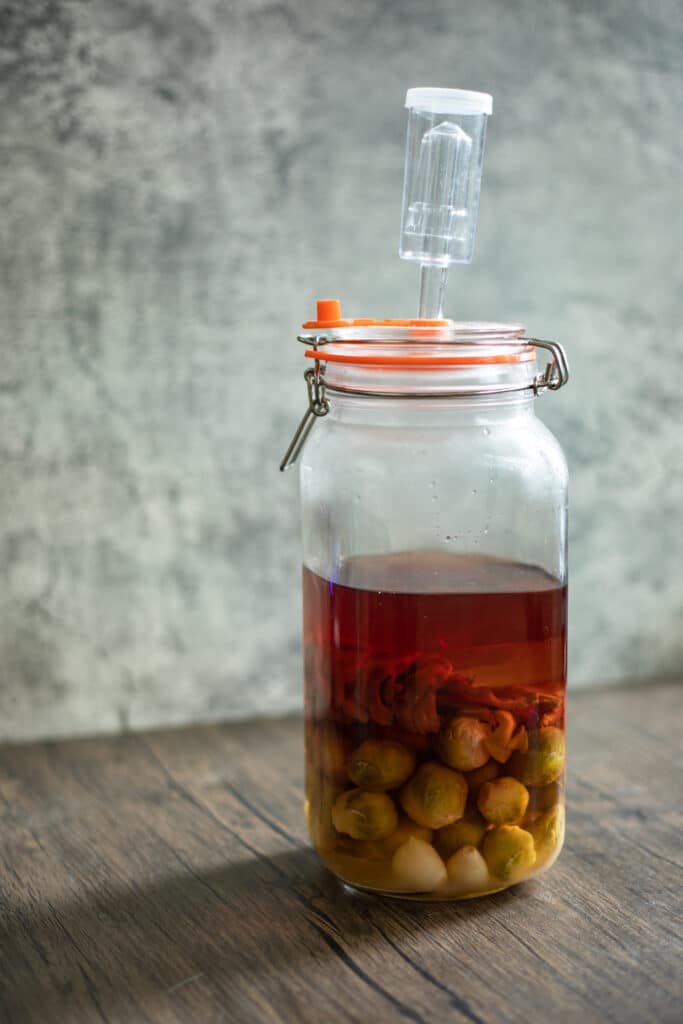
Looking for more Vegetable Sides?
- These Air Fried Brussels Sprouts are another great way to enjoy this cold weather vegetable! When you air fry the brussels sprouts like this they become this pop-able crispy bites that make a great snack.
- Oven Roasted Butternut Squash is a healthy vegetable side that is so delicious! The squash is toasted in garlic, sage, and cinnamon and oven roasted for crispy edges. It can also be made in the air fryer which makes it even more crispy!
- Crispy Roasted Potatoes is one of the best vegetable dishes! Potatoes are a vegetable that is loaded with vitamins and minerals- it’s a side dish that can’t be missed! These crispy potatoes are cooked in rosemary and garlic- they are the perfect healthy comfort food!
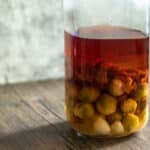
Equipment
- Fermentation Jar or a fermentation crock!
Ingredients
Instructions
- Clean your brussels sprouts and remove any dirty leaves
- In a large clean jar add the water, salt, bay leaf, and 3 cloves of peeled garlic
- Add the brussels sprouts and cover with the cabbage leaf, this is to help prevent anything from floating to the surface. Top with fermentation weights so everything is fully submerged
- Leave in a cool, dark place for 3-12 weeks. At three weeks the brussels sprouts will be crunchy and slightly sour and salty. At twelve weeks the brussels sprouts will be slightly softer (they still have a slight crunch) but will be sour and salty.
Did you try this recipe?
Please help support my content by rating this recipe!
Looking for more recipe inspiration?
Here is the latest!